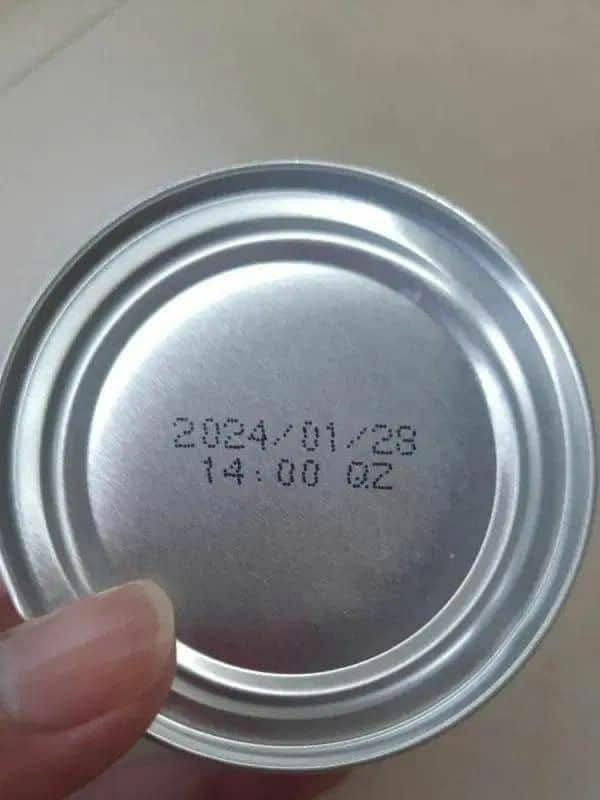Of course. Here is a comprehensive guide to understanding food expiration dates.
Here’s What You Need to Know About Food Expiration Dates
That date stamped on your milk carton or canned beans is one of the biggest sources of confusion in the kitchen. Contrary to popular belief, it is rarely a hard-and-fast deadline for when food becomes unsafe to eat. In fact, most dates are about quality, not safety.
Understanding the difference can save you money, reduce food waste, and prevent you from unnecessarily throwing away perfectly good food.
—
The Most Important Thing First: It’s About Quality, Not Safety
With the exception of infant formula, food expiration dates are not federally required in the U.S. and are not indicators of the product’s safety. They are added by manufacturers to suggest the peak quality of the product.
Most foodborne illness comes from improper handling, contamination, or cross-contamination—not from eating a food that is slightly past its “best by” date.
—
Decoding the Dates: A Glossary of Common Terms
Manufacturers use a variety of phrases, and each has a different meaning:
1. “Best if Used By/Before”
· What it means: This is the date recommended for the best flavor or quality. It is not a purchase or safety date.
· What to do: The food is perfectly safe to eat after this date. Its texture, flavor, or color might not be at its peak, but it won’t harm you. This is the most common and useful date label.
2. “Use By”
· What it means: This is the last date recommended for the use of the product while at peak quality. The manufacturer has determined that after this date, the quality may decline.
· What to do: You can often still consume the product after this date, but use your judgment (and your senses). This is often found on more perishable items.
3. “Sell By”
· What it means: This date is a tool for store management. It tells the retailer how long to display the product for sale for inventory management. It is not a safety date.
· What to do: You can and should ignore this date for your in-home storage. A product will usually be of good quality for several days to a week after the “Sell By” date if stored properly.
4. “Freeze By”
· What it means: This date indicates when a product should be frozen to maintain peak quality.
· What to do: If you want to preserve the current quality, freeze the product by this date.
—
How to Tell if Food is Actually Spoiled: Trust Your Senses
Your eyes, nose, and tongue are the best tools you have. The USDA advises: “If it looks questionable, throw it out.” Look for signs of spoilage:
· Smell: An off or unpleasant odor is a primary indicator.
· Sight: Look for mold (discard soft foods with mold; hard cheeses can be cut an inch around and below the mold), significant discoloration, or slimy texture.
· Texture: If it feels slimy, sticky, or unusually tough.
· Taste: If it passes the other tests but tastes off, spit it out and discard the item.
—
General Guidelines for Common Foods (After the Date)
· Eggs: Can be safe for 3-5 weeks after the “Sell By” date. Do the float test: place an egg in a bowl of water. If it sinks, it’s fresh. If it stands on one end, it’s older but still okay. If it floats, toss it.
· Milk: Often good for 5-7 days after the “Use By” date if refrigerated at 38°F (3°C) or below. Smell it—sour milk is unmistakable.
· Yogurt & Sour Cream: Often safe for 1-2 weeks past the date. Mold is the main concern.
· Hard Cheese (Cheddar, Parmesan): Can last months if stored properly. Cut away any mold (at least 1 inch around it).
· Poultry & Meat: Cook or freeze by the “Use By” date. Do not use after this date if it smells bad or feels slimy.
· Canned Goods: Highly acidic foods (tomatoes, pineapple) are best within 18 months. Low-acid foods (meats, vegetables) can last 2-5 years. Never use a can that is bulging, rusted, deeply dented, or leaking.
· Dry Pasta & Grains: Safe indefinitely when stored in a cool, dry place, though quality may decline over many years. Watch for pantry moths.
· Cereal & Crackers: Might become stale but are not unsafe.
—
How to Reduce Food Waste and Save Money
1. Understand the Labels: Now that you know what “Best By” means, you’ll be less likely to toss items prematurely.
2. Practice FIFO: “First In, First Out.” When you buy new groceries, move older products to the front so you use them first.
3. Store Food Properly: Ensure your refrigerator is at or below 40°F (4°C). Freeze items you know you won’t use in time.
4. Buy What You Need: Avoid bulk buying perishable items unless you have a plan to freeze or use them.
The Bottom Line
The date on the package is a manufacturer’s suggestion for peak quality, not an expiration date for safety.
Your senses are a much more reliable guide. By understanding this, you can make smarter, safer choices in your kitchen, save money, and play a part in reducing the massive amount of food wasted every year.
